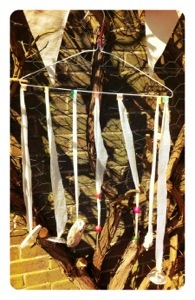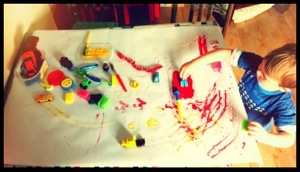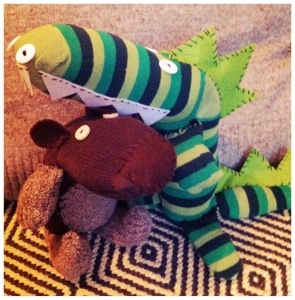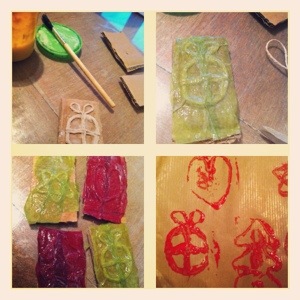Ingredients: coat hanger, washi tape, plastic bag ribbon, shells, tin foil cups, plastic / metal lids, beads, bells
The Big Sell: I wonder if we can decorate this old tree with something beautiful?
Strategy: As I’m currently preparing for an Eco Arts Day at our local museum, I’ve been experimenting with recycled materials. On this gorgeous sunny Bank Holiday, we decided to tackle chopping down a big dead old shrub in our back garden and the remaining twisted sculptural trunk seemed to be calling out for an outdoor arts exhibition.
Taking a wire coat hanger, I created plastic bag ribbon (which I’ve been loving to make of late to try out plastic bag weaving, more of which to follow) and tied strips on, securing the ends with washi tape. I then added various pendular objects – shells, craft bells and tin foil cups, plastic lids decorated with more washi tape.
Verdict: My pretty mobile now tinkles and flutters in the breeze. I’m not convinced its English-weather proof but it’ll live on a curtain rail inside when the weather is not fine. All round, a thoroughly satisfying result from recycled materials, and our dead old shrub now looks a lot happier!
Catchphrase: Peaceful birdsong and the gentle rustling of plastic ribbons…
Left wanting more?
Try plastic bag weaving, you simply make a loom from card, wrapping your base ribbon around one way before threading stripes of colour in and out through the opposite axis. If you want to see how I did it, keep posted for an upcoming blog. Great for making an outdoor garden kneeler or coasters.
Look back at my blog on Homemade Forest Schools for more ideas for outdoors play with your children.











